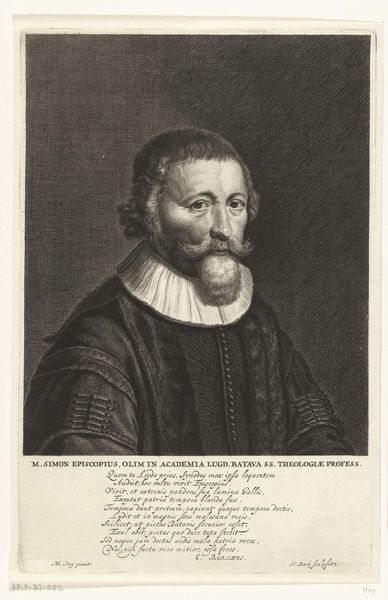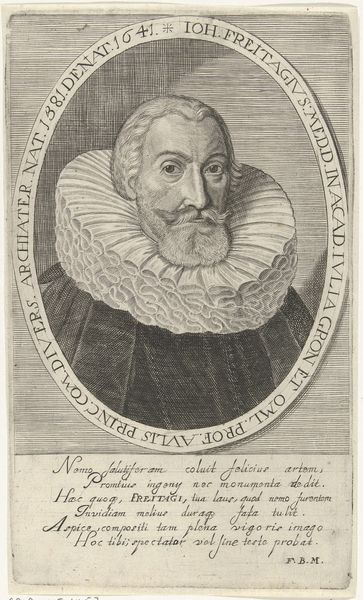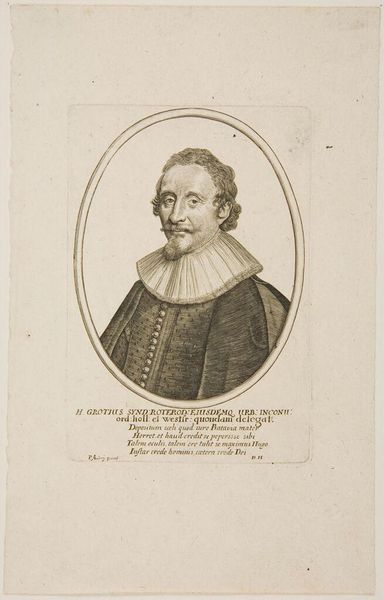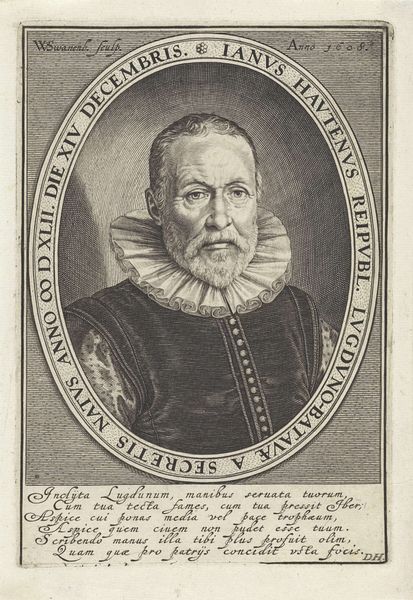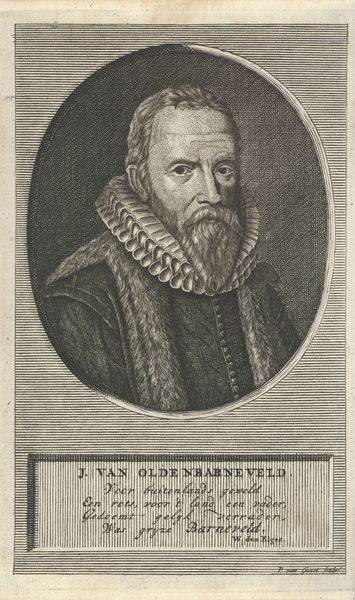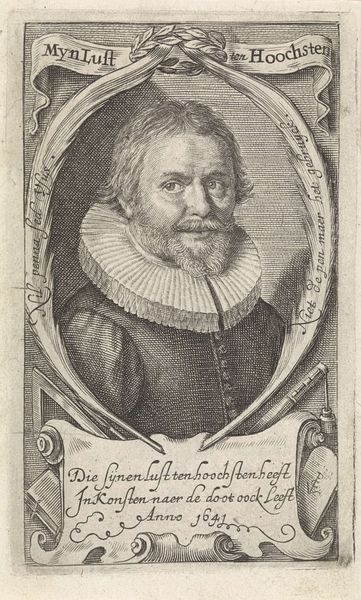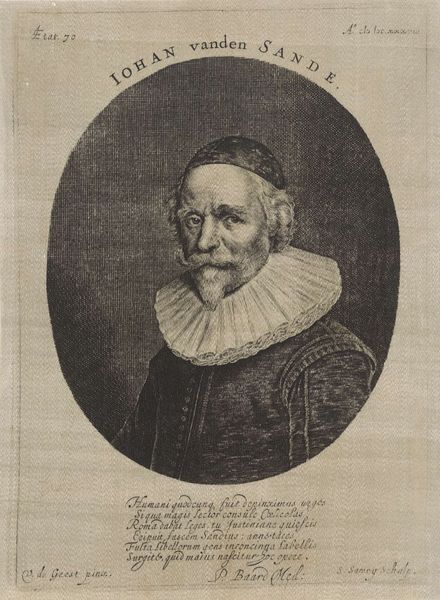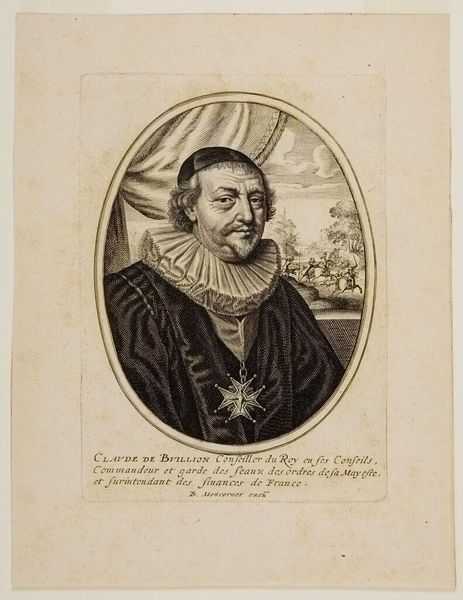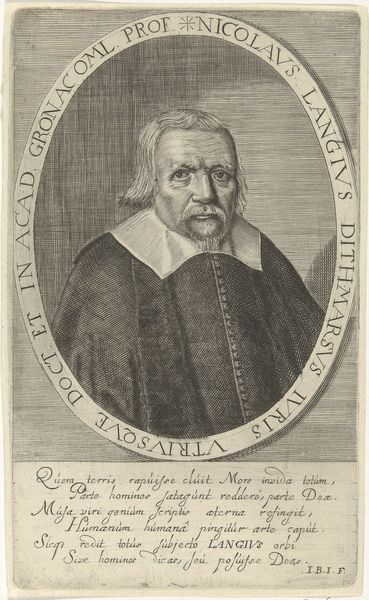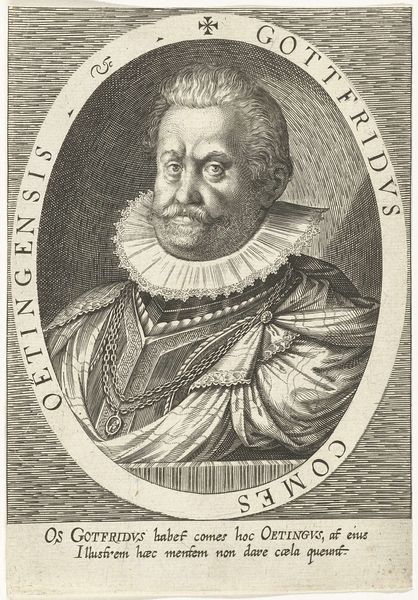
print, engraving
#
portrait
#
baroque
# print
#
old engraving style
#
portrait reference
#
northern-renaissance
#
engraving
Dimensions: height 232 mm, width 140 mm
Copyright: Rijks Museum: Open Domain
Curator: This engraving, crafted by Salomon Savery sometime between 1624 and 1648, offers a compelling representation of Simon Bisschop, a prominent theologian of his era. Editor: My first impression is one of solemnity, almost austerity. The sitter’s gaze is direct, yet there's a weariness etched into the lines around his eyes. The oval format emphasizes the gravity of the portrait, confining it within a symbolic frame. Curator: Bisschop was a key figure in the Remonstrant movement, which challenged some of the stricter Calvinist doctrines. Understanding the theological and political struggles of the Dutch Republic during this period is key to appreciating the nuance here. His image carries a heavy weight of dissent and intellectual debate. Editor: Absolutely. And I notice how the engraving itself reinforces this gravitas through the deliberate use of light and shadow. The meticulous detail given to his beard and the ruff collar, in contrast to the relatively plain background, pulls my focus to those attributes—wisdom, piety, perhaps a touch of stubbornness. Those are important status signifiers. Curator: He actively challenged the prevailing theological norms. Examining this portrait in the context of the Synod of Dort, and the subsequent persecution of Remonstrants, adds layers of complexity. The inscription beneath, a poem in Dutch, further emphasizes his perceived virtues and contributions. It's strategic self-representation intended for broad audiences. Editor: The inscription is so crucial. In terms of symbolism, it acts like a visual epitaph, celebrating not only his life, but reinforcing his identity within Amsterdam. This intertwining of personal piety and civic pride—so emblematic of the Dutch Golden Age—speaks volumes about how images were utilized in cultural memory. It solidifies Episcopius’ lasting symbolic value. Curator: Indeed. And perhaps the very act of commissioning and circulating this print becomes an act of resistance, subtly asserting his enduring influence despite attempts to silence his voice and erase him from history. It's visual advocacy through art. Editor: Looking at it now, it clearly signifies the resilience of memory against forces attempting erasure. We get more than just a face; we are gifted an ongoing, layered meaning. Curator: A powerful testament to the enduring connection between art, identity, and social struggle. Editor: It certainly urges us to appreciate how historical figures live on through symbols long after their death.
Comments
No comments
Be the first to comment and join the conversation on the ultimate creative platform.
